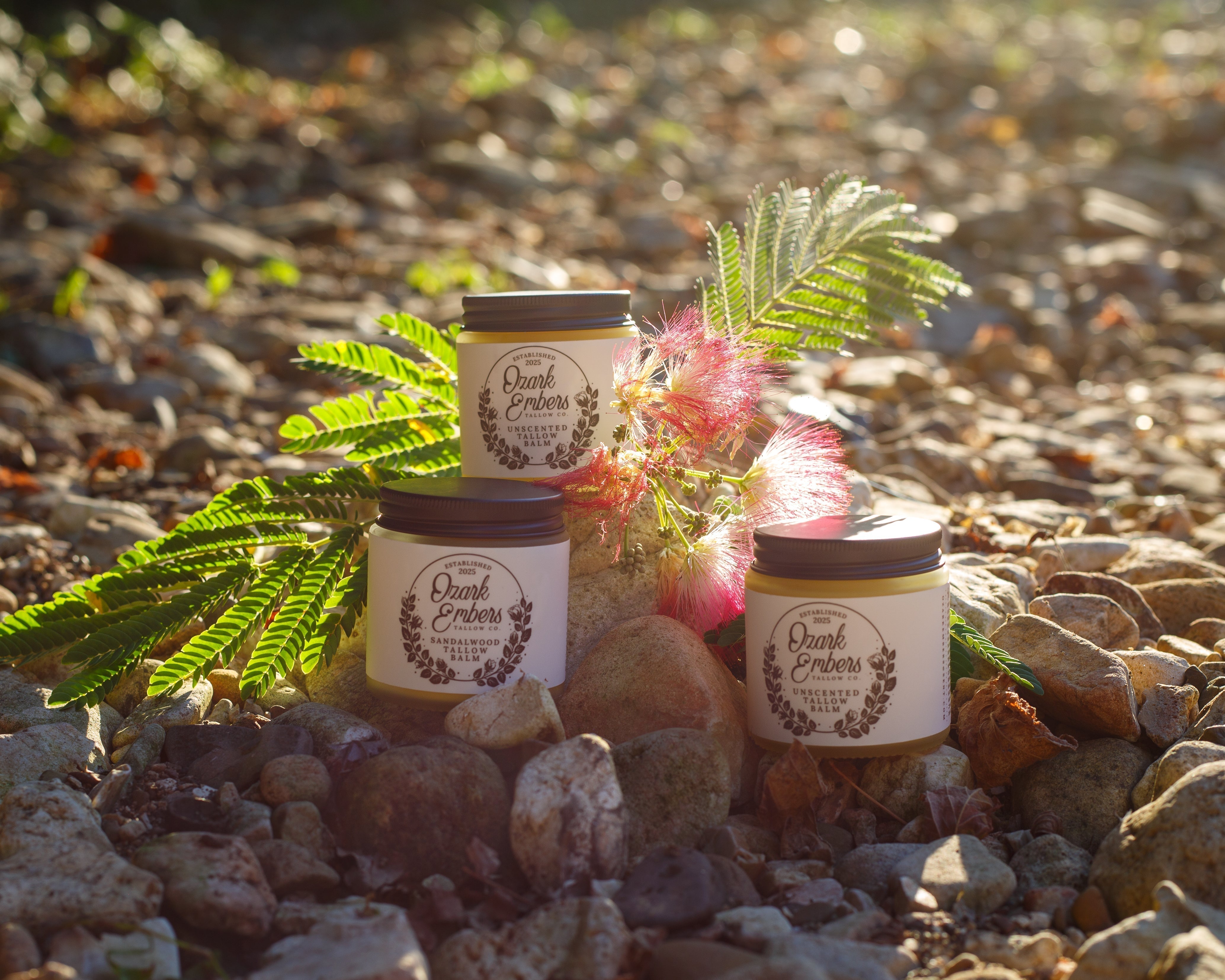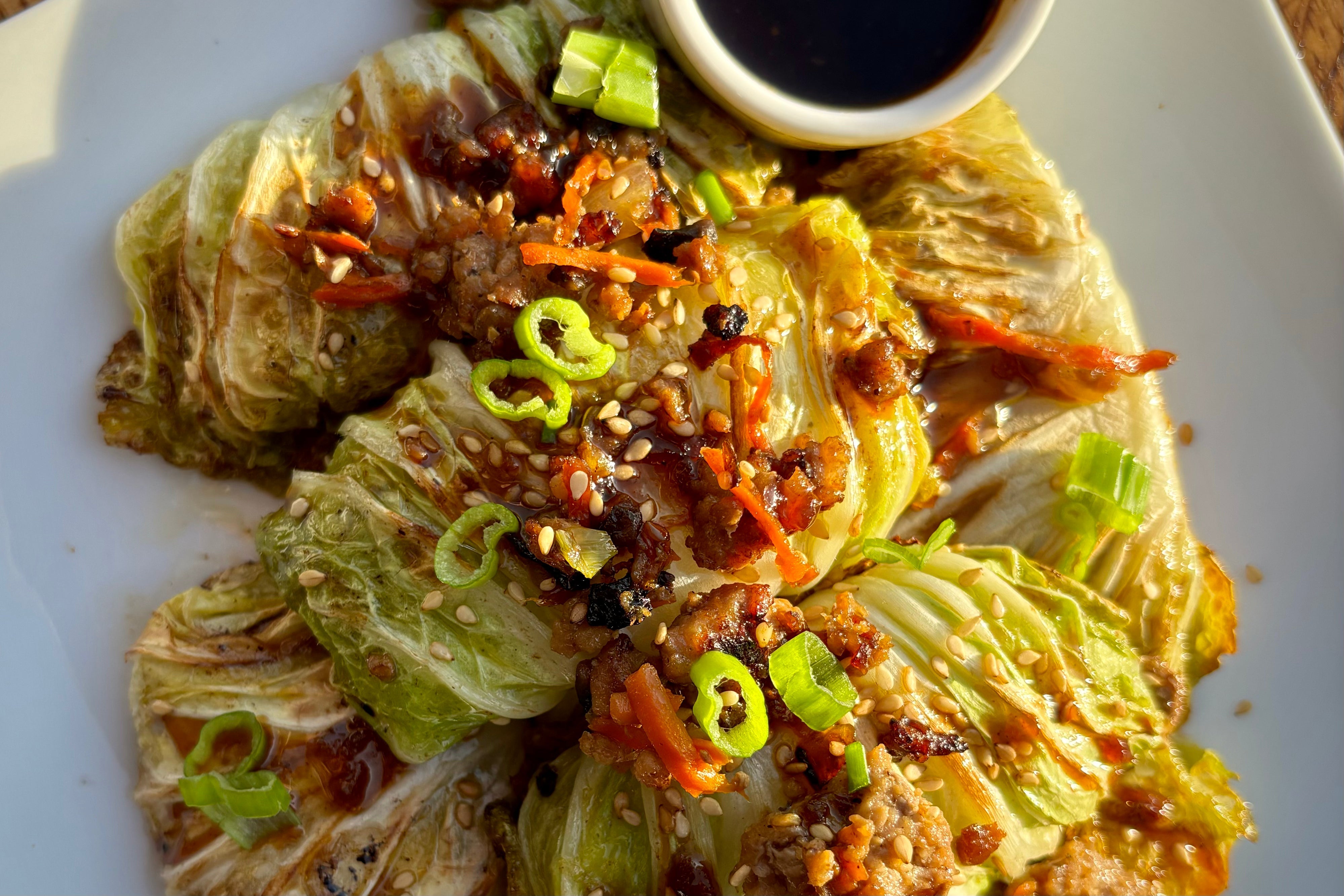Beef Tallow: The Healthy Fat you're Overlooking

Image by Ozark Embers Tallow Co.
This isn’t the first time you’ve heard us talk about the benefits of healthy fats, and it certainly won't be the last. One of our favorite traditional fats, beef tallow, is making a well-deserved comeback both in kitchens and in skincare routines.
But what exactly is beef tallow, and why is it so special?
What is Beef Tallow?
Tallow is rendered (or clarified) beef fat. When fat is slowly cooked down and the moisture is removed, it becomes shelf-stable and resistant to bacterial growth. The result is a solid fat with a smooth, wax-like texture that melts easily when warmed. Beyond its versatility, beef tallow is packed with nutrients like fatty acids and vitamins A, D, E, and K.
How is Beef Tallow Made?
The process is simple but slow: fresh beef fat is gently simmered until it becomes clear. This careful rendering can take hours, but the result is worth it. Once strained, the clear, yellow tallow can be stored for months at room temperature of even longer in the fridge.
How to use Beef Tallow
One of the best things about tallow is how versatile it is. It can be used for a variety of purposes but it’s important to recognize that some tallows are rendered specifically for cooking purposes while others may be made for skin care. Be sure to check the label before you start using it!
A few common uses include:
In the kitchen
It’s perfect for high-heat cooking thanks to its high smoke point (around 475 degrees F)
It adds a rich, savory flavor that vegetable oils just can’t match.
It can easily replace butter, lard, shortening, or vegetable oils in recipes.
For body and skin care
It’s a natural moisturizer that hydrates and softens skin
It can be a soothing balm for burns and eczema
It is a great ingredient to boost the effects of homemade soaps and lotions
Traditionally
It has been used as a leather conditioner and in candle making.
Why the Quality of the Tallow Matters
Not all beef tallow is created equally. The nutritional profile and safety of the product depends heavily on how the cows were raised.
Tallow from pasture-raised, grass-fed and finished cows is especially nutrient-dense, with high levels of Omega-3 fatty acids, CLA, and antioxidants. It’s important when sourcing fat for tallow that it’s being sourced from healthy animals that haven’t been injected with growth hormones, antibiotics, and unnecessary chemicals.
Beef tallow isn’t just an old-fashioned ingredient; it’s a nutrient-rich multi-purpose fat that deserves a place in modern kitchens and bathrooms alike. From flaky pie crusts to soothing skincare, it’s one of nature’s most versatile gifts.
If you haven’t tried it yet, consider this your sign: beef tallow might just become a staple in your household!

Recent Posts



These cabbage rolls are pasture-raised comfort food at its finest—filled with savory ground pork, farm-fresh veggies, and a kiss of Korean BBQ flavor.



